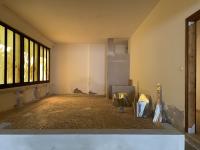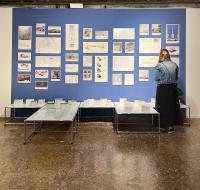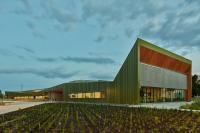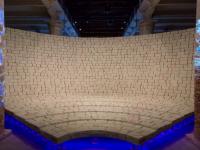Dingshu Vocational School of Pottery
Yixing, China
Ding Shu, located in Yixing, Jiangsu Province, 200 kilometers away from Shanghai. This small town on the shore of Taihu Lake has a history of pottery making for thousands of years. All kinds of pottery produced are famous, among which the most well-known is the Zisha teapot, which is made of Zisha clay. For centuries, possessing an elegant Zisha teapot has been a lifelong pursuit of Chinese literati and tea drinkers. With the increase of demand and development of the pottery culture, Dingshu has gradually developed into the center for the production and trading of pottery. Therefore, the life of local community residents is also closely related to pottery culture.
Dingshu Vocational School of Pottery, one of the few schools specialized in pottery training in the national rural adult education system, aims to increase the income level and improve the local livelihood by offering academic education and skills training, and is supposed to open up to rural communities that lack public facilities after school hours as a venue for public education and activities.
Through the study of the local pottery history, genarchitects learned about the way pottery making was handed down from master to apprentice in workshop. By having seminars with people from the surrounding communities, practitioners, teachers and craftsmen, we find the clue of creating “an artisan school," and the design goal of a low-density campus centered on a "pottery workshop" was gradually established. Instead of designing a common campus with massive buildings and extensive squares, Dingshu Vocational School of Pottery is a low-density cluster of buildings that adopted the meandering spatial layout of traditional artisan workshops. The four essential buildings, i.e. two workshops, a multifunctional hall, and an exhibition hall, are placed at the center of the campus, and the Beech Tree Plaza enclosed by them serves as a central stage for outdoor events.
The architects prioritized the unique spatial requirements for each step in the process of pottery making, and arrived at a variety of unique spaces, including classrooms with open views and soft light for reading and drawing, introverted and quiet workshops for sculpturing and embossing, and an exhibition hall with a tranquil atmosphere surrounded by large beams and columns for exhibiting the outstanding pottery works. Each function acquires its corresponding space, structure, and equipments, resulting in a series of single buildings on their own.
A dozen of scattered, low-rise "small buildings" are thus arranged, with different types of exterior spaces exist between them. Each building has good natural lighting and ventilation. These juxtaposed various internal and external spaces are linked by porches and corridors, form a diverse environment. The pleasant landscape and the atmosphere of free communication serves as a source of inspiration for pottery creation.
At the same time, the architects also considered the economy of construction cost in choosing materials and structural systems. As a result, the fundamental enclosure structure is made of 400mm thick double-leaf sandwich walls, combined layers of aerated concrete block, insulation layer, and brick, which ensures the thermal performance of the building and reduces energy consumption under the local climate situation of hot summer and cold winter.
Brick, concrete, and sandstone are the main materials for this campus. Brick firing, wall masonry, and concrete casting are similar to pottery making and convenient for local workers to take on. The use of ordinary materials combined with new construction techniques allow the campus to easily merge into the existing context of the town. Upon completion, the builders and local residents immediately feel so close to the new campus.
Born from the development of pottery, this school now provides high-quality pottery training every year for thousands of local residents, improving their professional skills as well as living standards. Meanwhile, the ongoing cultural demonstration and exchange activities taking place at the school also benefit the local community and keep the long tradition of pottery making alive in this small town.














